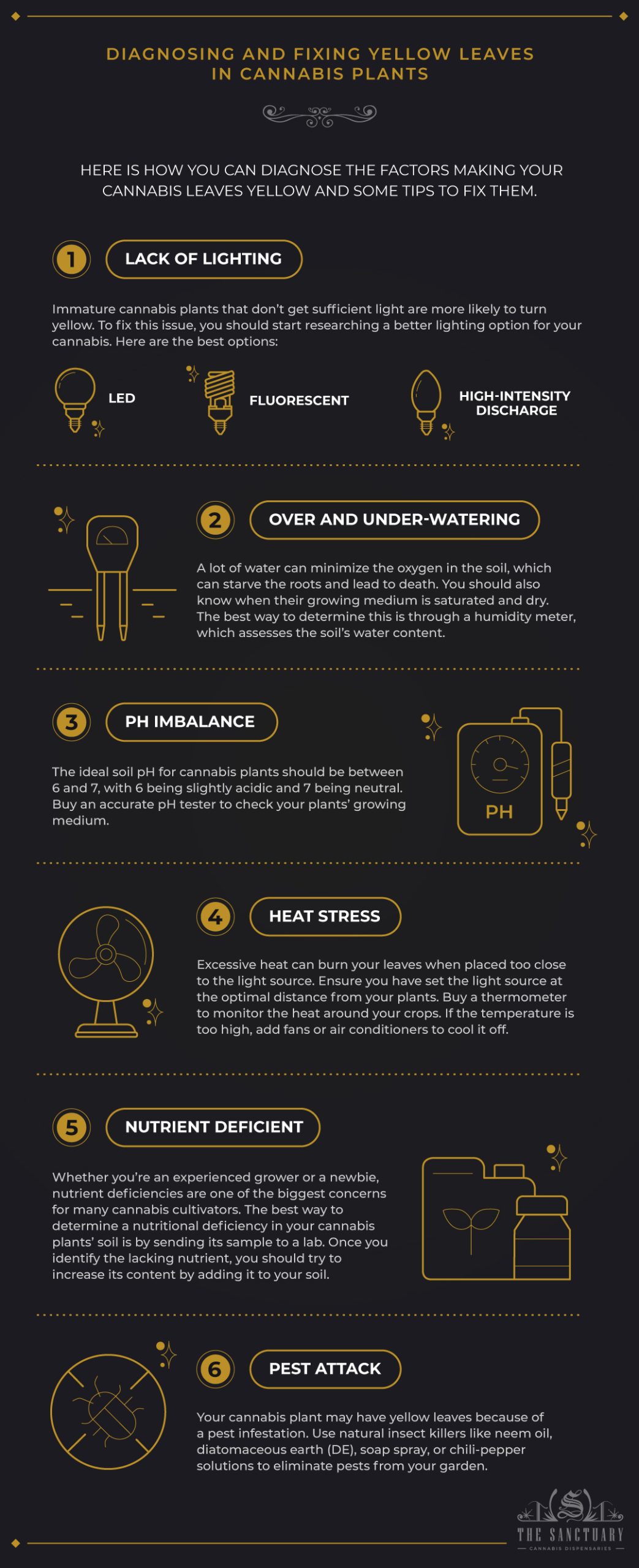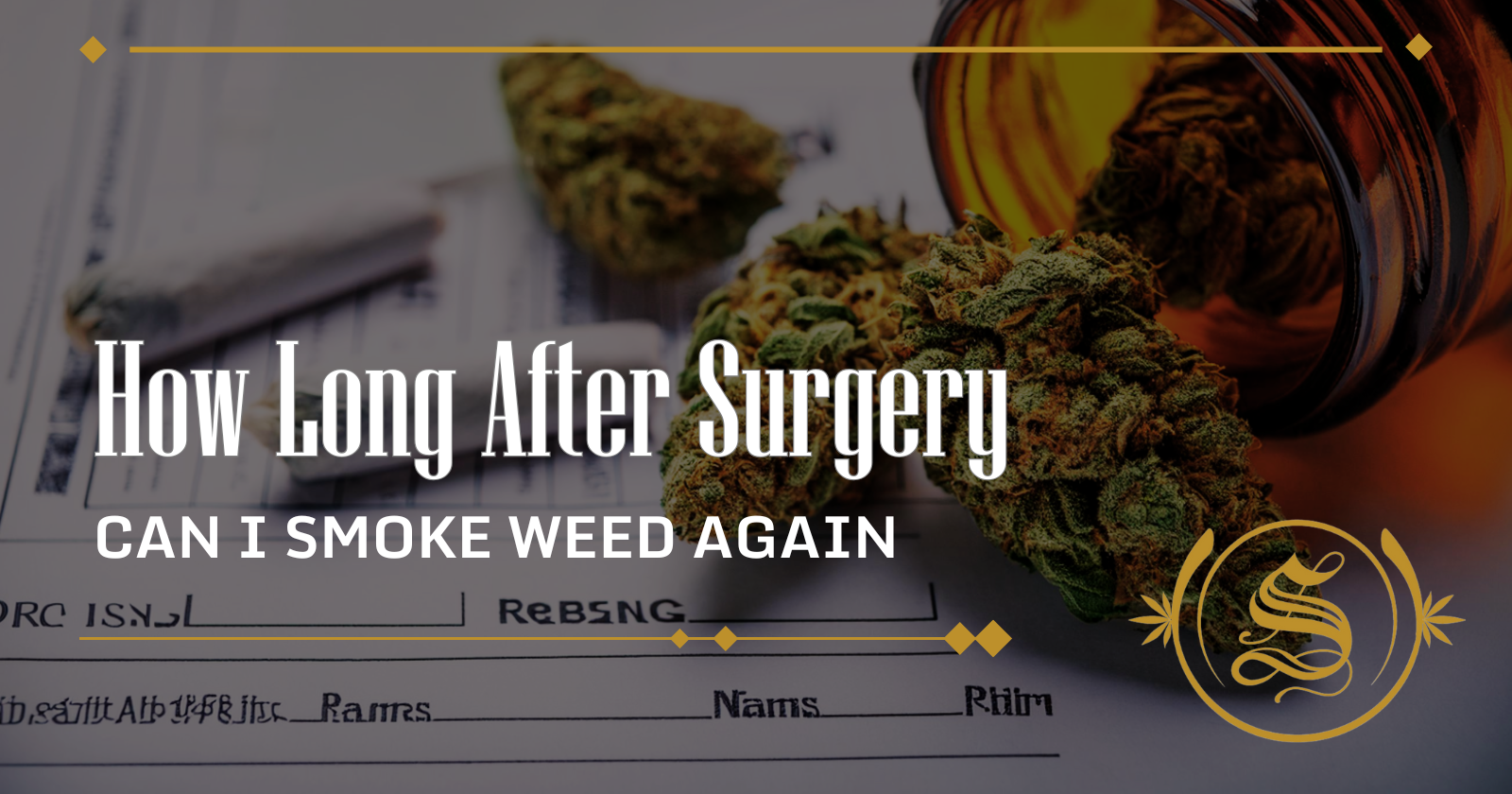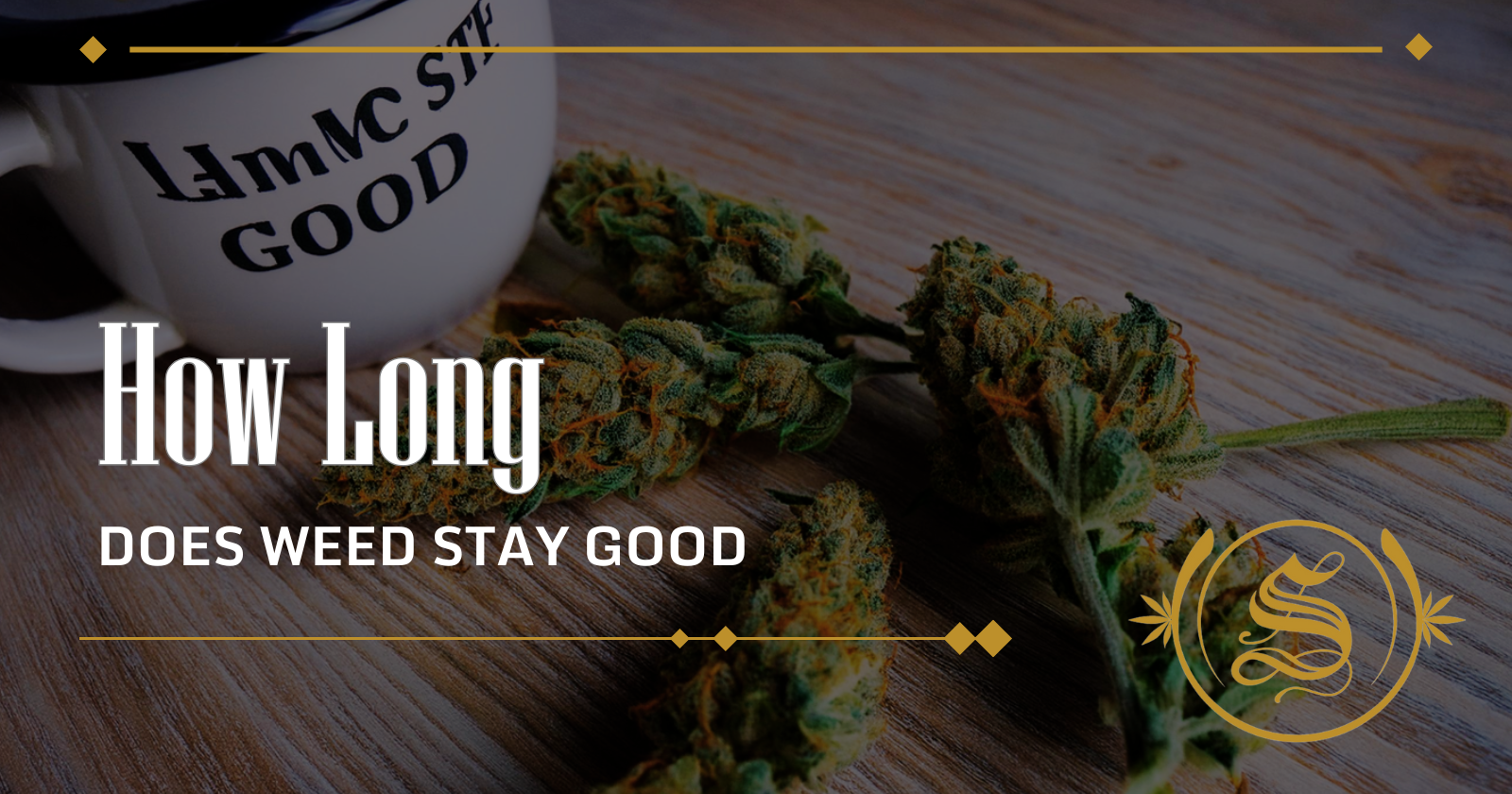Iftikhar Alam
Author
Reviewed by Cannabis Experts
Published on: October 13, 2023 | Updated on: September 11, 2024
Sometimes, no matter how much love and care you give your cannabis plants, they won’t look as lively and fresh as you expected. Even if you water them on time, prune them regularly, and feed them the best power foods, their leaves will still turn yellow.
If you’re dealing with this situation, the good news is that there is nothing to fear. Yellow leaves don’t always mean that your growth is about to die. Instead, you can fix this issue in different ways.
Whether you’re a beginner grower or a professional one, this guide will help you restore your cannabis plant’s beauty as before. So let’s dig in.
Why Do Cannabis Leaves Turn Yellow?
The process of leaves turning yellow is called chlorosis, which occurs naturally when the plant begins losing chlorophyll. Many factors can trigger chlorosis, such as senescence (the natural aging process), lack of sunlight, insufficient lighting, heat stress, etc.
Senescence is not something to worry about. Like every plant, cannabis’ leaves also become yellow or droopy during fall, mainly when their growing season is about to end. That’s similar to what happens to deciduous trees in the fall season.
Many growers flush fresh water on their cannabis growth later in the cultivation stage. Unfortunately, doing so accelerated their natural aging by removing the nutrients from the plants. So, chlorosis doesn’t threaten your cannabis growth; it just stops regular photosynthesis.
Diagnosing and Fixing Yellow Leaves in Cannabis Plants

If you want your cannabis growth to stay fresh and evergreen for a long time, you must act quickly to recover them before it’s too late. Here is how you can diagnose the factors making your cannabis leaves yellow and some tips to fix them.
Lack of Lighting
Lighting is vital for plants to grow healthily. It helps them with photosynthesis, which is a crucial process for their survival. Immature cannabis plants that don’t get sufficient light are more likely to turn yellow. Meanwhile, mature ones may become dark in this unfavorable condition.
Apart from finding the right lighting type for your cannabis growth, you must also set it at a correct distance from your plants. To see if you have done it right, check the stem stretches between the newer or smaller leaves (also called nodal spacing) on your plants. If the space is more than a leaf’s width, your plants suffer from a lack of lighting.
How to Fix This Issue
To fix this issue, you should start researching a better lighting option for your cannabis. Here are the best options:
- LED: Low power, energy-efficient, and produces less heat; ideal for small grows
- Fluorescent: Low power, energy-efficient, and generates less heat; suitable for small grows
- HID (High-intensity discharge): Intense lighting, high power, and ideal for large grows
HIDs, such as metal halide (MH) or high-pressure sodium (HPS), are ideal for optimum growth of cannabis seedlings. You can use LEDs in a small room but place them close to the plants.
Over and Under-Watering
While watering may seem like the best treatment for chlorosis, overdoing it can accelerate the process. The rule is to water your plants the right amount — not less, not much.
A lot of water can minimize the oxygen in the soil, which can starve the roots and lead to death. If your plants’ leaves appear droopy and yellow, you have over-watered them. On the other hand, under-watered plants appear thin and yellow.
How to Fix This Issue
First of all, you must understand your plants and their watering needs. You should also know when their growing medium is saturated and dry. The best way to determine this is through a humidity meter, which assesses the soil’s water content.
pH Imbalance
pH shows the acidity and alkalinity of the soil. The ideal soil pH for cannabis plants should be between 6 and 7, with 6 being slightly acidic and 7 being neutral.
If your plants’ pH isn’t optimal, they can’t acquire the proper nutrients, leading to yellow leaves. You may also observe burning edges and spots on your cannabis leaves in this case.
How to Fix This Issue
First, buy an accurate pH tester to check your plants’ growing medium. If you suspect an imbalance, shift the plant to another pot or soil with an optimal pH level.
Heat Stress
Excessive heat can burn your leaves when placed too close to the light source. Some may become droopy, while others turn yellow. This happens because marijuana is vulnerable to extreme temperatures.
Heat stress can also occur due to improper lighting, especially in the case of high-intensity HID bulbs. You can tell if your plants suffer heat stress through a hand taste. Simply keep one hand next to your plant for thirty seconds. If it feels too hot, it will be too hot for your cannabis as well!
How to Fix This Issue
Ensure you have set the light source at the optimal distance from your plants. Buy a thermometer to monitor the heat around your crops. If the temperature is too high, add fans or air conditioners to cool it off.
Nutrient Deficiencies
Whether you’re an experienced grower or a newbie, nutrient deficiencies are one of the biggest concerns for many cannabis cultivators. While the issue is easily fixable, it’s also very challenging to detect. If you take too long to identify a nutrient deficiency in your plants, their leaves may quickly turn yellow.
Here are some common nutrients your crop’s soil needs to stay green and fresh:
- Nitrogen
- Potassium
- Calcium
- Magnesium
- Sulfur
- Zinc
- Iron
- Manganese
How to Fix This Issue
The best way to determine a nutritional deficiency in your cannabis plants’ soil is by sending its sample to a lab. Once you identify the lacking nutrient, you should try to increase its content by adding it to your soil. But do so gradually, or your crops may get into a nutrient shock.
Pest Attack
Lastly, your cannabis plant may have yellow leaves because of a pest infestation. The fungus gnats are the most common insects causing chlorosis in cannabis plants, which usually appears due to overwatering.
The larvae of gnats live in the marijuana plant’s roots and feed there, leading to chlorosis eventually. These insects don’t eat your plant directly, so it’s hard to determine their infestation.
How to Fix This Issue
Use natural insect killers like neem oil, diatomaceous earth (DE), soap spray, or chili-pepper solutions to eliminate pests from your garden.
Conclusion
Cannabis leaves turn yellow due to natural aging, lack of nutrients, insufficient lighting, heat stress, pest infestations, or over and under-watering. The phenomenon is called chlorosis, which you can easily prevent or delay if you know the exact reason causing it.
Hopefully, the above diagnoses and fixation tricks will help you restore your cannabis plants’ beauty. Happy Gardening!
The content provided on this blog is for informational purposes only and does not constitute medical, legal, or professional advice. Cannabis use is subject to local laws and regulations, which vary widely by jurisdiction. Always consult with a healthcare professional before starting any new treatment or altering an existing treatment regimen. The authors and publishers of this blog are not responsible for any actions taken based on the information provided herein. Use cannabis responsibly and in accordance with applicable laws. This blog is intended for adults aged 21 and over. The Sanctuary Dispensaries D186, D187.








